READY TO GET STARTED?
REQUEST A FREE ESTIMATE
Fill out the form below or call (888) 466-7849 for a free, no-obligation estimate.
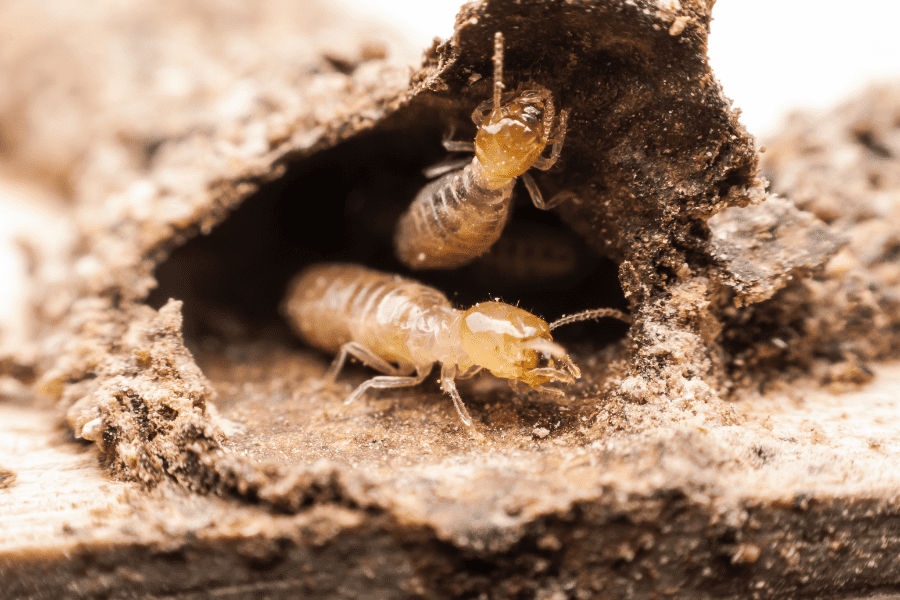
Termites are known as silent destroyers, meaning they can go undetected for a long period of time, making their destruction devasting. Common termite species, such as subterranean termites, will infest our Augusta homes and damage the infrastructure, costing billions of dollars in repair. It can be difficult to detect subterranean termites, often hiding until the damage is done, but it is possible. To prevent termites, every homeowner should recognize signs of termite infestations. Check out our top 5 signs of termites that you might see in your home:
Often found on exterior surfaces, subterranean termites create mud tubes that allow them to move back and forth between their nest and their food source, which is often your home. These tunnels help protect termites from any predators and provide moisture for survival. Usually, mud tubes can be found wrapped around walls, ceilings, and floors. Mud tubes are common signs of termites.
Sometimes, hearing noises is your first sign of a termite infestation. Often, if a termite colony has infested your home, you can hear a faint clicking or knocking sound coming from behind walls and other voids. Termites create this noise when a soldier termite bangs their head against wood or vibrates their bodies to signal damage to their colony. When you listen closely, you can also hear termites chewing through wood.
Have you noticed hollow wood inside your home or in trees throughout your yard? If so, this is a major sign that termites have established a colony on your property. These pests destroy wood from the inside out, leaving only a thin layer of wood behind. When checking for hollow wood, try tapping on the area in question. You’ll hear a hollow or paper sound, indicating an infestation. Other signs include blistering or bubbling paint in or near wood structures, including windows and door trims.
Frass is the name for the waste termites leave behind. When subterranean termites travel through wood, they will push debris and waste out behind them through tiny openings. You may notice small black marks or a dark powdery substance around the infested area with small piles of sawdust-like droppings. These sawdust droppings are frass and are usually the color of the structural wood infested.
The most obvious sign of a termite infestation is seeing the damaged wood itself. Floor, window, and door damage is a major indication that termites are inside. Another indication includes windows and doors not opening or closing smoothly. Take note of any floors that buckle or sag and have them inspected.
If you’ve noticed any of these termite signs or damage, consider contacting your pest control company for a thorough inspection and treatment plan before any more termite damage is done.
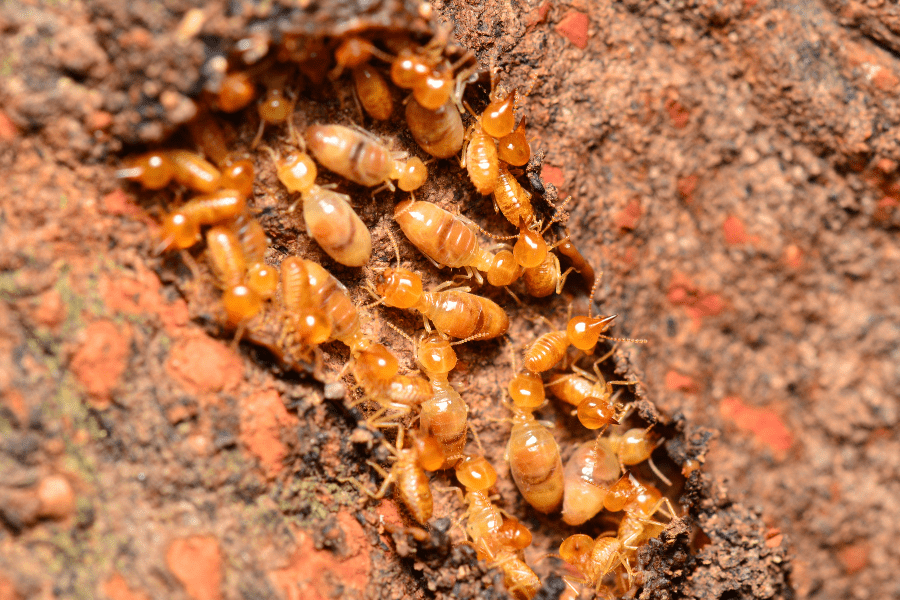
Spring is a crucial time for identifying and dealing with termites because it’s the season for swarming. Swarming termites are a big indicator that a termite colony is nearby, which could mean an infestation is occurring. It’s better to discover you have termites earlier than later, due to the significant damage they can cause to your home.
Swarming termites are winged adult termites that mature and fly away from their colonies to continue reproducing. Termite swarming begins at different times of the year depending on the type of termite, but they all usually begin when the weather begins warming up following a significant rain event. The one type of termite that typically swarms first is known as subterranean termites.
Because termites eat wood from the inside out, termite damage often goes undetected for long periods of time. Often in fact, by the time signs of termites appear, colonies are well established, and significant damage has already been done. If you begin spotting swarming termites, keep an eye out for other signs of termites, like these below:
If you suspect you have a termite problem or if you spot signs of a termite infestation, contact a professional termite control company who can provide you with a thorough termite inspection and a comprehensive termite protection and treatment plan.
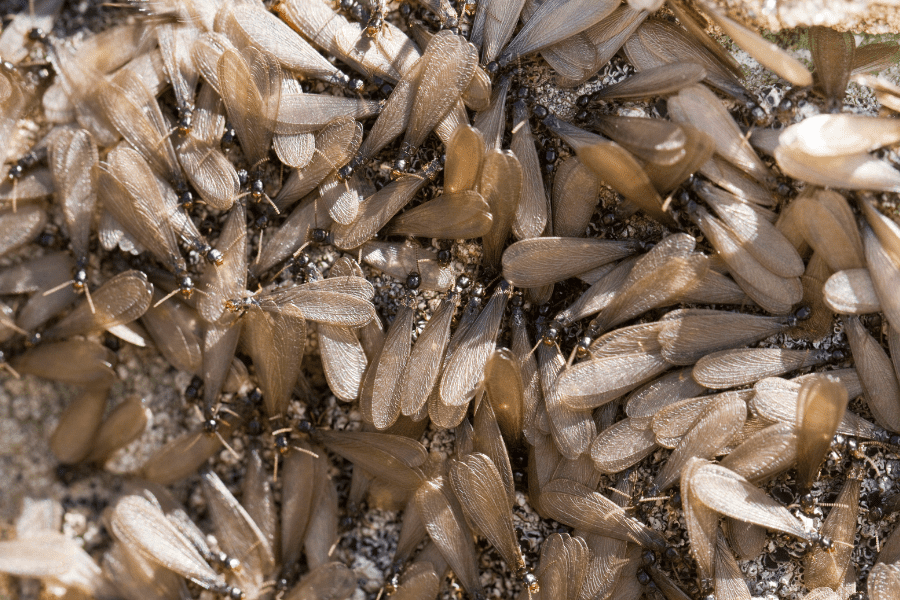
One of the most common signs of termites in your home, including those in Augusta, is seeing a swarm of flying insects. With swarming season around the corner, be on the lookout for these groups of flying insects, including swarming termites.
But how do you know if they’re termite swarmers? Unfortunately, swarming termites appear like flying ants, but there are noticeable differences, especially if you can get a closer look.
Here are three ways to tell the difference in termites vs flying ants:
Beyond the physical differences, they also possess behavioral differences. Both insects live in large colonies with designated caste systems, but termites can also be found in decaying trees, stumps, wood debris, lumber, and wooden structures. The only ant species that would live in any type of wood are carpenter ants; other species wouldn’t be found in these areas.
If you believe you have termites causing damage to your home, reach out to your local pest control company who can provide a free inspection and service plan that’s right for you and your property.
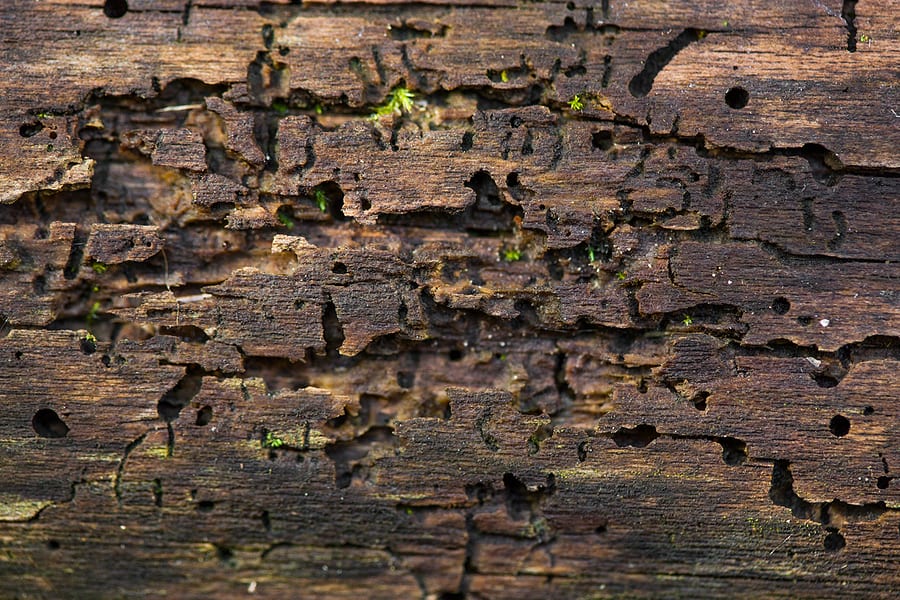
Termites are one of the most destructive pests, causing significant damage to homeowners in the United States each year. Termites often go long periods of time undetected, allowing a termite infestation to proliferate inside your home. But what causes a termite infestation in the first place? What attracts termites to your home?
Termites are attracted to moisture, especially subterranean termites. Damp basements, bathrooms, laundry rooms, kitchens, leaky pipes, and stagnant water around foundations are common areas that termites are attracted to. Rotten or water damaged wood should be replaced immediately. Leaky or broken pipes should also be repaired as soon as they are discovered. Make sure roofs and gutters are cleaned properly and that proper drainage systems are established. Check and repair issues with foundations. Use a dehumidifier to reduce moisture in attics, crawlspaces, basements, and any other rooms where humidity is high.
Termites will feed on just about any type of wood. This includes new wood, painted wood, treated wood, rotted wood, water damaged wood, wood mulch, wallpaper, and shelf paper. As such, care should be taken to reduce access to wood in and around your home. Foliage and mulch should be kept at least 28″ away from foundations. Wood mulch should be replaced with another coverage medium, like rubber mulch or treated cedar. Anywhere wood comes into contact with the sides of your home also provide a bridge termites can use for access. This allows them to make their way inside, even bypassing soil that has been treated with termiticides. Get rid of any vines, trellises, mulch, stumps, firewood, etc. that is close to your home’s foundation. Trim limbs away that touch the roof, as well.
Termites are silent destroyers, eating wood from the inside out, allowing them to establish colonies and infestations before any signs of their presence arise. It is important to recognize the signs of termites so they can be detected earlier before they can cause significant damage. It is also beneficial to have an annual termite inspection performed by a termite control company. These professionals will inspect the interior and exterior of your home, looking for signs of termite activity or previous termite damage. They can then present you with the best termite control options when necessary.
Are Bed Bugs Active in the Winter?
When Is Millipede and Centipede Season?
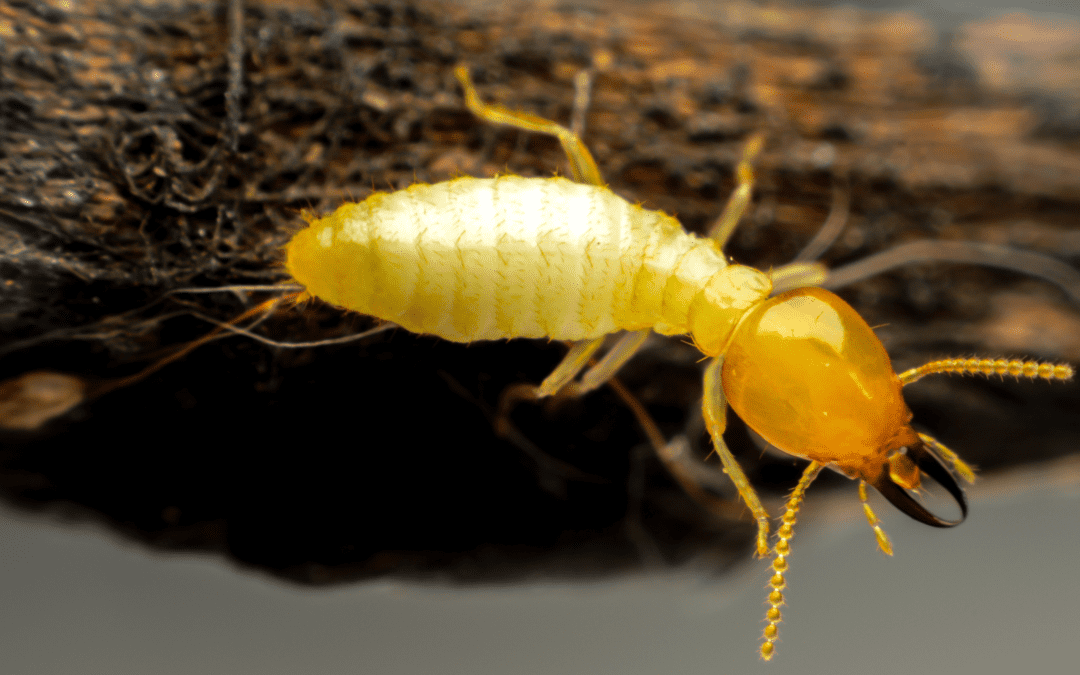
It’s no surprise that termites are still active in the fall. The only factor that changes termite activity in the fall season is their tendency to burrow deeper into the ground. However, if these pests burrow their way into your home, they won’t need to dig deeper to find warmth and instead will infest.
Continuing termite control into the colder months will help to protect your home up until spring begins again. Be sure to keep up with termite control to lessen the chance of termites swarming in the spring and summer months.
Regardless of the season, there are common signs of termite infestations to look for in your home, including:
There are a few steps for termite protection you can take in and around your home. Make sure all water and gas lines are sealed adequately. Fix any leaky faucets or appliances and get rid of any standing water. Try to eliminate any cellulose material, as this is a termite’s primary food source.
If you suspect you have a termite problem or want to stay proactive against them, reach out to your local pest control company to receive a free termite inspection and discover the best plan of action perfect for you and your home!